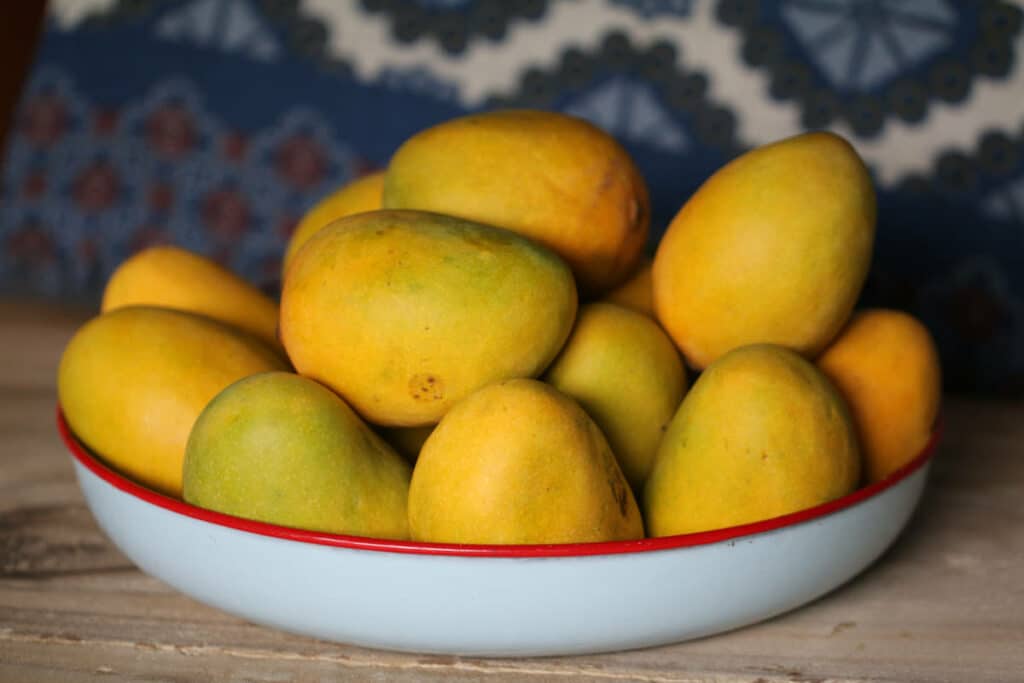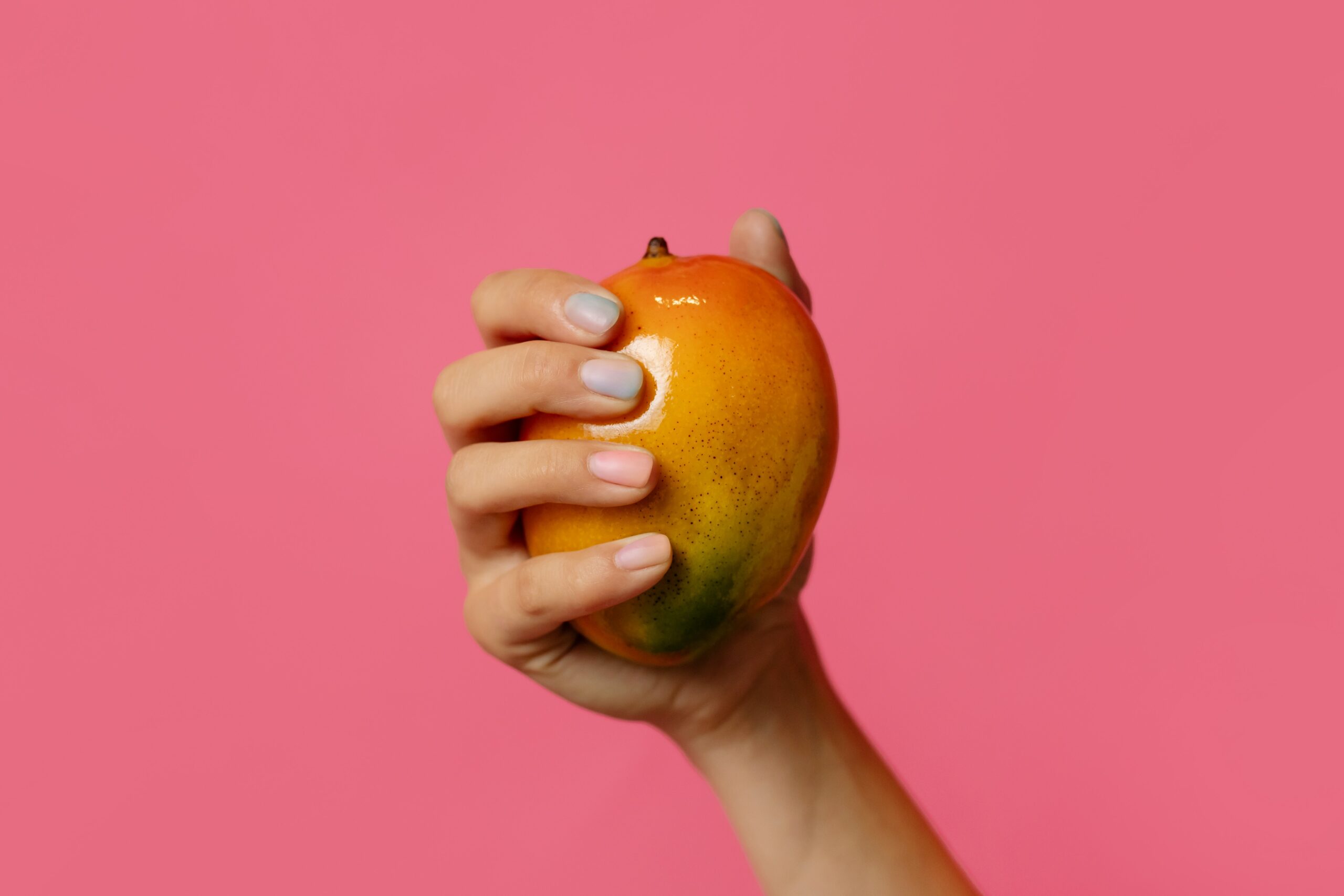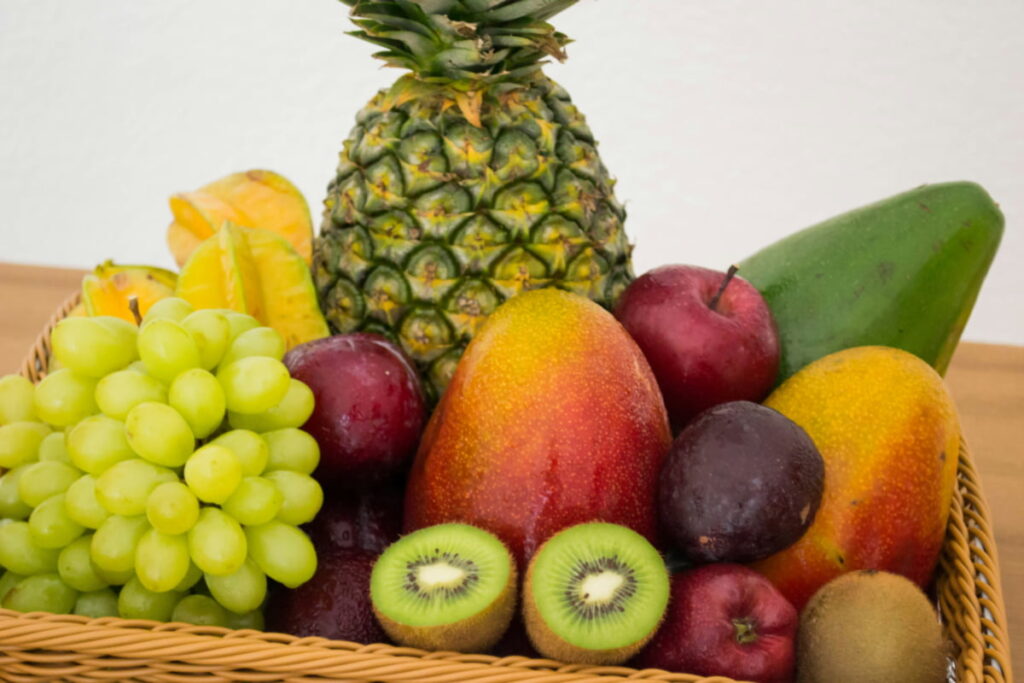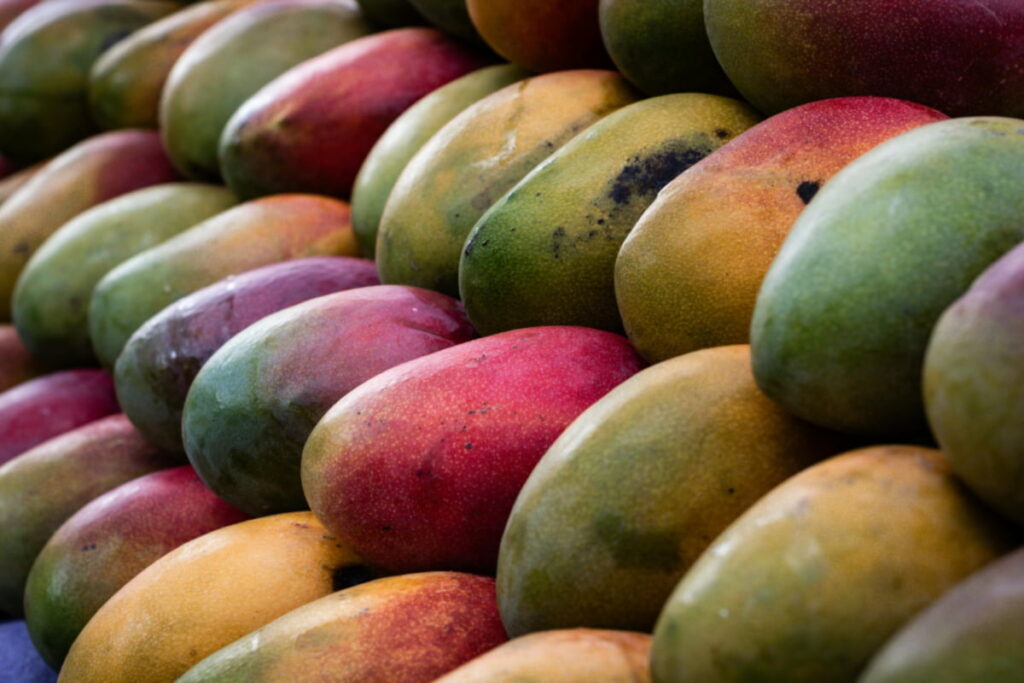
You know the vibe: you’ve got a gorgeous mango, bright green and rock-hard, sitting on your kitchen counter and taunting you.
Been there. On my childhood property we had two mango trees, so many that I learned early: you don’t rush a mango; you let it get there. Sometimes they’d just hang until they were perfectly sweet. Other times I’d want one tomorrow and try everything.
Here’s your no-guesswork guide to getting that creamy, juicy mango-perfection, and avoiding the mushy or bland “rushing it” outcome.
You Might Like: How to Ripen Papayas
How Mango Ripening Works (The Quick Science)
Mangoes are what scientists call climacteric fruits: after being picked they keep ripening thanks to the plant hormone ethylene.
Here’s how I explain it:
- At harvest (often while still firm), mangoes are heavy in starch and low in sugar.
- Once stimulated (by ethylene, warmth, airflow) enzymes break starch into sugars, soften the flesh, build aroma compounds.
- Temperature matters: too cold and the process stalls; too hot and things go weird (soft outside, dry inside).
In short: time + gentle warmth + airflow = properly ripe mango. Hacks can speed it up—but understanding why helps you pick the right method.
5 Ways to Ripen a Mango (Fastest → Slowest)

Here are five methods I use (and recommend). Pick the right one for how soon you want that mango, and what you’re doing with it (fresh eating vs. smoothie vs. salsa).
Method 1: The Paper Bag Trick (Classic and Reliable)
This is the go-to method for a reason, it’s easy and gentle. Mangoes naturally release ethylene gas, which triggers ripening. The paper bag traps that gas, keeping it close to the fruit so it ripens evenly.
Grab:
- A brown paper bag
- 1–2 unripe mangoes
How to do it:
- Place the mangoes inside the bag.
- Roll the top closed (not airtight, they need a bit of airflow).
- Leave at room temperature for 1–2 days.
You’ll know they’re ready when they smell sweet and the skin gives slightly under pressure. For faster results, toss in a banana or apple, both release even more ethylene and can cut the time in half.
Method 2: The Rice Trick (Overnight Mango Ripening Magic)
It sounds strange, but this old-school trick actually works, and fast. Rice naturally traps ethylene gas, the same compound mangoes release as they ripen. When you bury firm mangoes in uncooked rice, that gas stays concentrated, softening and sweetening them in record time.
Grab:
- 1–2 firm, unripe mangoes
- A bowl or container
- Enough uncooked rice (white or brown) to fully cover them
How to do it:
- Pour a layer of rice into the bowl.
- Nestle the mangoes in and cover completely.
- Leave at room temperature for 24–48 hours.
- Check after the first day — if the skin gives slightly and smells sweet, it’s ready.
In one test on Youtube, rock-hard mangoes turned perfectly ripe in just two days.
Method 3: The Newspaper Wrap (Slow and Steady)
This is how my grandmother used to do it, and it still works beautifully. Wrapping mangoes in newspaper slows down moisture loss while trapping just enough warmth and ethylene gas to ripen them evenly.
Grab:
- Newspaper sheets or a paper towel
- A few firm mangoes
How to do it:
- Wrap each mango individually in newspaper.
- Place them in a cool, dry spot (like a countertop).
- Let sit for 2–3 days, checking daily.
Once they start giving off that sweet, tropical aroma, they’re ready to eat.
This method works just like the paper bag trick, but it’s slower and gentler, perfect if you want natural sweetness without the risk of overripening.
Here is a video showing the newspaper ripening method in action:
Method 4: The Fruit-Bowl Method (Slow and Natural)

This one’s as simple as it gets, and honestly, it’s how I’ve done it most of my life. Growing up with mango trees in the yard, we’d just leave them on the counter and let time (and the summer heat) do the work.
Grab:
- A bowl or tray
- A warm, ventilated spot (like a sunny kitchen counter)
How to do it:
- Place your mangoes in a single layer, not stacked.
- Keep them at room temperature, away from direct sunlight.
- Turn them once a day to ripen evenly.
This takes the longest, usually 3–5 days, but gives you that deep, sun-warmed sweetness that feels closest to mangoes ripened on the tree.
Method 5: The Warm Spot (Sunlight Shortcut)
If you live somewhere warm, this one’s effortless. Mangoes love a little heat, not direct sun, but gentle warmth helps them ripen faster.
Grab:
- A bowl or tray
- A sunny windowsill or warm kitchen corner
How to do it:
- Place your mangoes in a single layer (not stacked).
- Set them near a sunny spot — indirect sunlight works best.
- Flip them once or twice a day to ripen evenly.
In 2–3 days, the color deepens, and that signature mango aroma appears. Just don’t leave them in direct, harsh sunlight, that can cause uneven ripening or dark spots. Think gentle warmth, not a tan.
Artificially Ripened Mangoes (And How to Spot Them)
If you’re buying mangoes from a store or market, there’s one thing to watch out for, artificially ripened fruit.
Some sellers use chemicals like calcium carbide to speed up ripening. It makes mangoes look picture-perfect on the outside but leaves them tasteless and chalky inside. In some countries, it’s even banned because it can irritate the skin or cause headaches when handled often.
After growing up with mango trees, I can spot the difference instantly: naturally ripened mangoes smell sweet and feel soft, while the artificial ones often have no aroma and an odd grayish tint near the stem.
How to tell a mango is naturally ripened vs rushed:
| Natural ripening | Artificially ripened |
| Slight give, fragrant stem aroma | Uniform bright color, weak or chemical smell |
| Aroma of mango (fruity, sweet) | Faint smell or no fragrance |
| Texture even, juicy | Soft outside, still firm or fibrous inside |
How Do You Know When Mangoes Are Ripe?

You can spot a ripe mango using three simple clues:
- Feel: Give it a gentle squeeze, it should yield slightly, like a ripe peach. Too firm means unripe; too soft means overripe.
- Smell: A ripe mango gives off a sweet, fruity aroma near the stem. No scent? It’s not ready yet.
- Color: Most varieties turn golden yellow, orange, or red when ripe, though some stay green, just lighter and softer in tone.
If you’re still unsure, trust your nose, ripe mangoes always smell like sunshine.
What Not to Do
After years of growing and eating mangoes straight from the tree, I’ve learned that how you don’t handle them matters just as much as how you do.
- Don’t refrigerate unripe mangoes: Cold temps stop the ripening process completely. My friend learned that the hard way when a beautiful green mango turned rubbery instead of golden.
- Don’t wrap them tightly in plastic: They need airflow to breathe; otherwise, moisture builds up and causes mold.
- Don’t stack or pile them: Pressure bruises mangoes easily, especially when they’re close to ripe. Give them their own space.
How to Store Ripe Mangoes
Once your mangoes hit that perfect soft spot and smell like pure summer, it’s time to store them right.
- Whole & ripe: Pop them in the fridge; they’ll last about 5 days and stay juicy.
- Cut mango: Store the pieces in an airtight container and eat within 3–4 days. I use them over yogurt or oatmeal.
- Freezing: Cut into cubes, lay flat on a tray, then bag once solid. The texture changes slightly, but frozen mango is perfect for smoothies or sauces.
Before You Go
Now that you’ve mastered mango ripening, why not dive into my full Fruit Ripening Hub, where I cover everything from how to ripen bananas (same ethylene story) to avocados and peaches.
Your counter is about to get a whole lot tastier.

